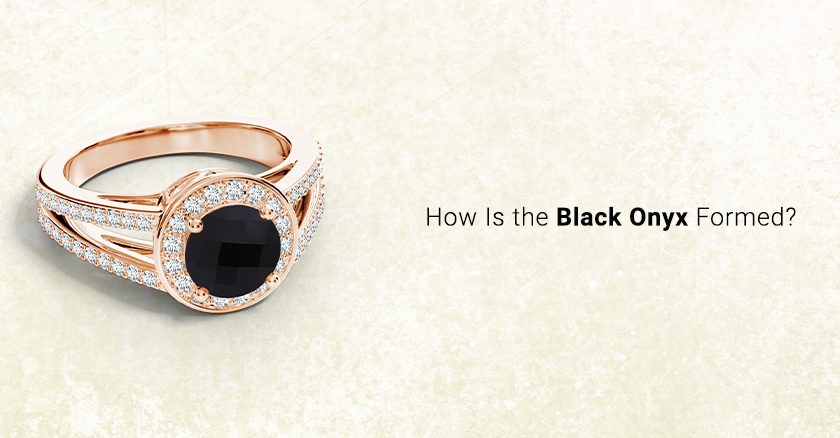Mysterious and sophisticated, the black onyx is one gemstone that consistently inspires conversation. And while its USPs are typically discussed in great detail, the jewel’s formation is rarely spoken about.
In this post, we will talk about the black onyx in-depth and give you some extra information about the stone’s formation.
Keep reading…
What is Black Onyx?
It is a semi-precious gemstone that gets its name from the ancient Greek word ‘ὄνυξ’, which means ‘fingernail’ or ‘claw’.
According to legends, Venus (Goddess of love) fell asleep on the banks of the Indus River. While she slept, Cupid clipped her fingernails with his arrows and scattered them across the sand before disappearing from the scene. To ensure that the precious nails of the Goddess did not perish, the Greek Gods transformed them into gorgeous gemstones, which they later called ‘onyxes’.
Initially, the term ‘onyx’ was used to describe every colour variation of the stone – from brown to red to back to fingernail white. However, the Romans eventually restricted its usage to only the darker shades of the jewel.
As indicated by the folklore, this gem can be found in several varieties, with each one showcasing a different hue. These colours can range from red to brown to pitch black. However, the black-hued onyx is the most sought-after variation by far.
In addition to its pitch-black hue, which works well with every outfit, the jewel is also known for its mostly opaque surface, which sets it apart from the crowd.
How Is It Formed?
The black onyx is a variety of silicate layered chalcedony, which is a type of microcrystalline quartz. It is formed through the combination of quartz and moganite (a polymorph of quartz). Interestingly, these minerals are presented as fine intergrowths within the gem’s chemical structure.
A little-known fact about this stone is that while silicate layered chalcedonies are available in large quantities, their black variety is actually exceedingly rare. Due to this, natural black onyxes are seldom sold in the market today.
Instead, black onyxes are created by treating dull or grey chalcedonies until they get the desired hue.
Do note: As these chalcedonies feature the same chemical structure as natural black onyxes, they are also considered to be real.
What Treatments Do They Undergo?
Believe it or not, since time immemorial dull or grey onyxes have been dyed before being sold to the masses.
The treatment begins with soaking the gemstone in a sugar solution. During this process, the liquid penetrates the body of the jewel through the tiny cracks that are present on its surface. Once done, the gem is treated with either sulfuric or hydrochloric acid. The acids work by carbonizing the sugar deposited on the top layers of the gemstone. This darkens the jewel and gives it the rich black hue that it is known for.
In certain cases, the stone is also heat-treated to get rid of any bands or unwanted colours.
Both these treatments are quite stable (which means that they do not greatly affect the durability or chemical structure of the stone), and their results are permanent.
We hope this article gave you all the information you need.
Also Read: How Are Opals Formed?




























